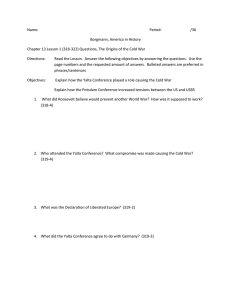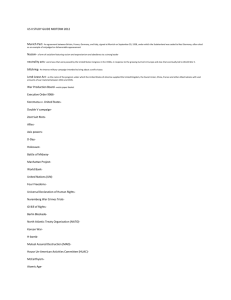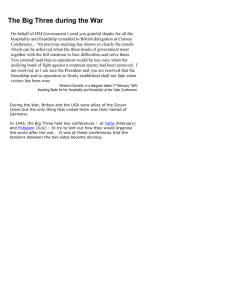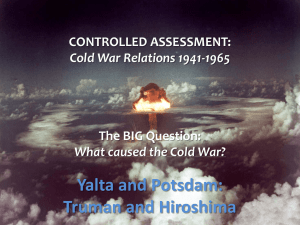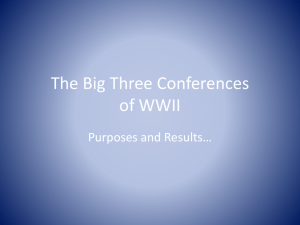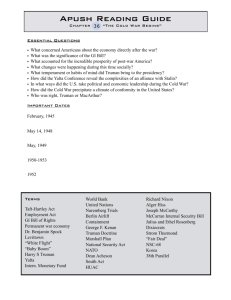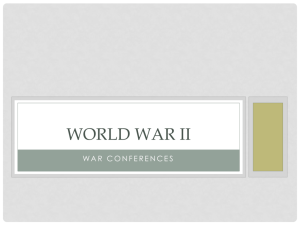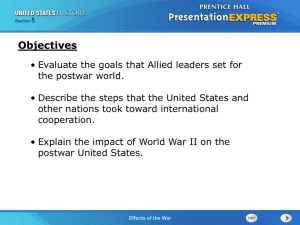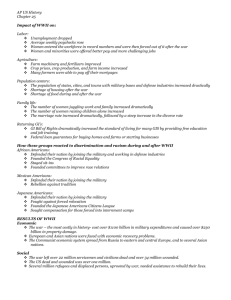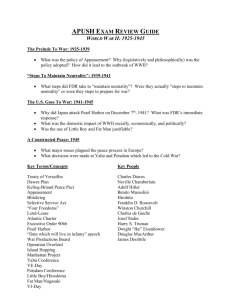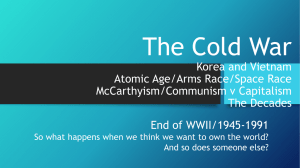Worksheet #2 – The Yalta and Potsdam conferences
advertisement
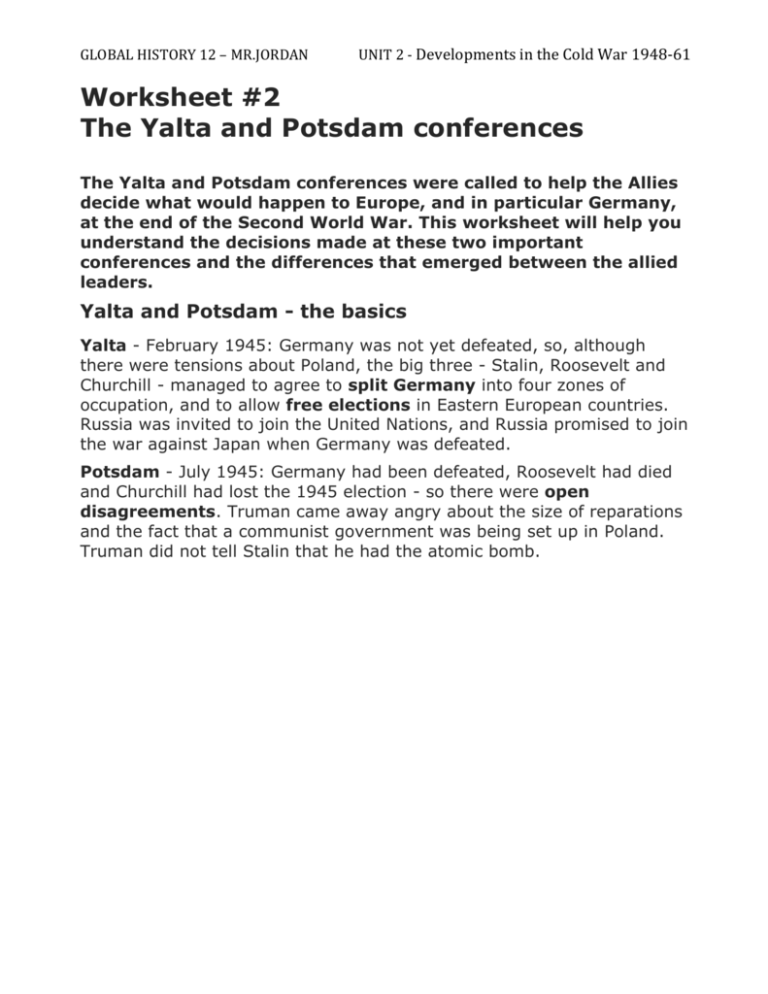
GLOBAL HISTORY 12 – MR.JORDAN UNIT 2 - Developments in the Cold War 1948-61 Worksheet #2 The Yalta and Potsdam conferences The Yalta and Potsdam conferences were called to help the Allies decide what would happen to Europe, and in particular Germany, at the end of the Second World War. This worksheet will help you understand the decisions made at these two important conferences and the differences that emerged between the allied leaders. Yalta and Potsdam - the basics Yalta - February 1945: Germany was not yet defeated, so, although there were tensions about Poland, the big three - Stalin, Roosevelt and Churchill - managed to agree to split Germany into four zones of occupation, and to allow free elections in Eastern European countries. Russia was invited to join the United Nations, and Russia promised to join the war against Japan when Germany was defeated. Potsdam - July 1945: Germany had been defeated, Roosevelt had died and Churchill had lost the 1945 election - so there were open disagreements. Truman came away angry about the size of reparations and the fact that a communist government was being set up in Poland. Truman did not tell Stalin that he had the atomic bomb. GLOBAL HISTORY 12 – MR.JORDAN UNIT 2 - Developments in the Cold War 1948-61 Differences between Yalta and Potsdam It will help if you are able to describe the huge differences between Yalta and Potsdam - the issues were the same, but the goodwill to overcome them was gone, because the countries no longer needed to stick together. Note how not all the broken promises were by Stalin: Comparison of Yalta and Potsdam Yalta Potsdam Churchill, Roosevelt and Stalin Attlee, Truman and Stalin Germany to be split into four zones. Germany will pay reparations. Arguments about the details of the boundaries between the zones. Disagreements about the amount of reparations Russia wanted to take. It was agreed that Russia could take whatever it wanted from the Soviet zone, and 10 per cent of the industrial equipment of the western zones, but Britain and the US thought this was too much. Truman was angry because Stalin had arrested the non-communist leaders of Poland. A government of 'national unity' to be set up in Poland, comprising both communists and non-communists. Free elections in the countries of eastern Europe. This part of the agreement was called the Declaration of Liberated Europe. Russia would help against Japan when Germany was defeated. America and Britain were alarmed because communists were coming to power in the countries of Eastern Europe. Truman dropped the atomic bomb so that Japan would surrender before Russian troops could go into Japan. America had the bomb in July 1945, but Truman did not tell Stalin about it. When he saw how he had been tricked, Stalin was furious. GLOBAL HISTORY 12 – MR.JORDAN UNIT 2 - Developments in the Cold War 1948-61 WORKSHEET #2 REVIEW QUESTIONS 1. Why did the Allies decide have to have a conference at Yalta? 2. Where is Yalta? Why there? 3. Who were the three main countries at Yalta? Their leaders? 4. They decided to divide up both Germany and Berlin into four sectors. Describe the division. GLOBAL HISTORY 12 – MR.JORDAN UNIT 2 - Developments in the Cold War 1948-61 5. Why do you suppose the allies chose to divide up Germany and keep troops their to occupy their ‘sector’ following the end of WWII? 6. Truman, the American President, who took over after Roosevelt’s death, was angry leaving the Potsdam Conference. What was he angry about? 7. What small piece of information did Truman keep from Stalin? Why? 8. What was the disagreement over reparations? Why would the Soviets need/want a lot of reparations from the Germans? 9. Why do you suppose the Yalta and Potsdam Conferences seen as factors leading to the Cold War? GLOBAL HISTORY 12 – MR.JORDAN UNIT 2 - Developments in the Cold War 1948-61
